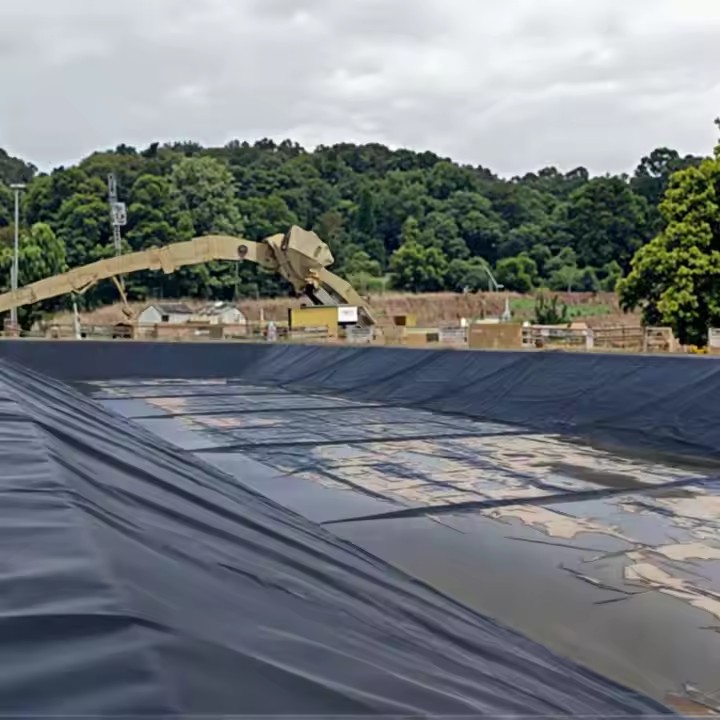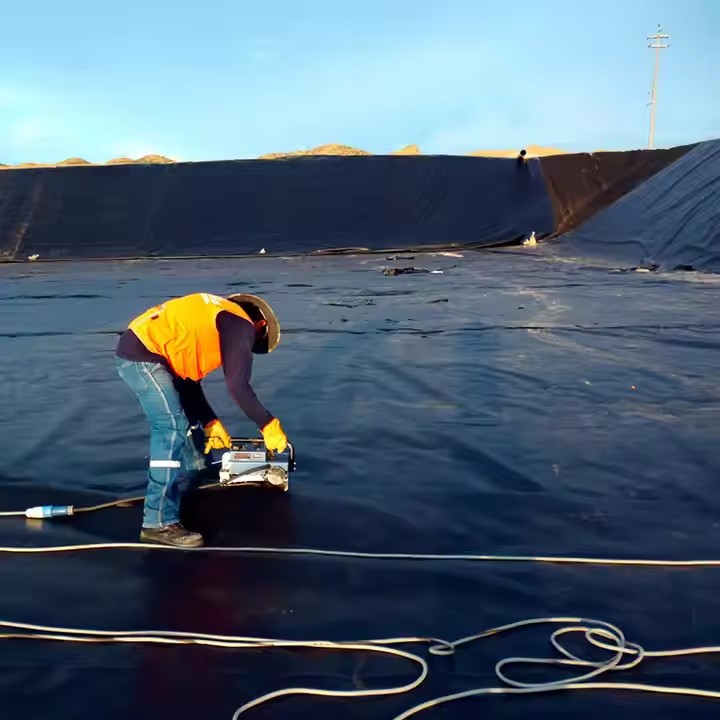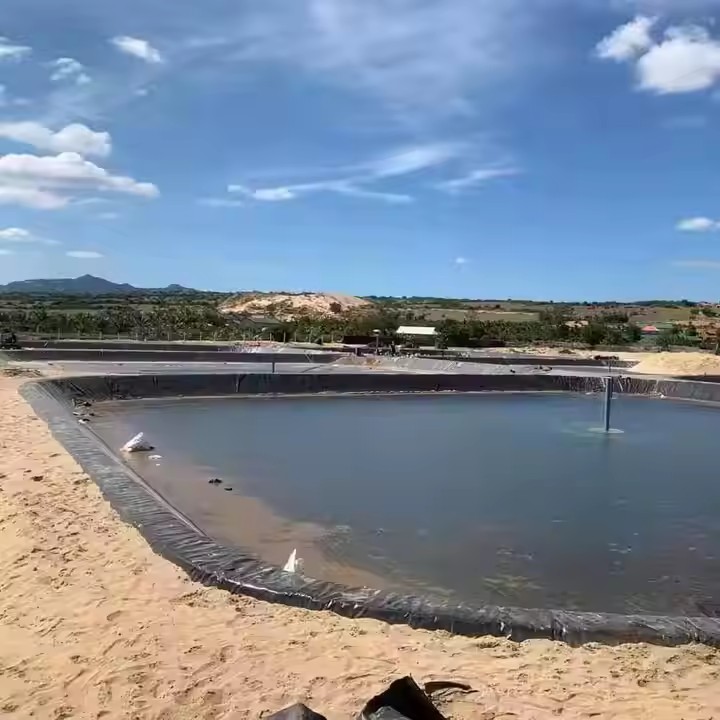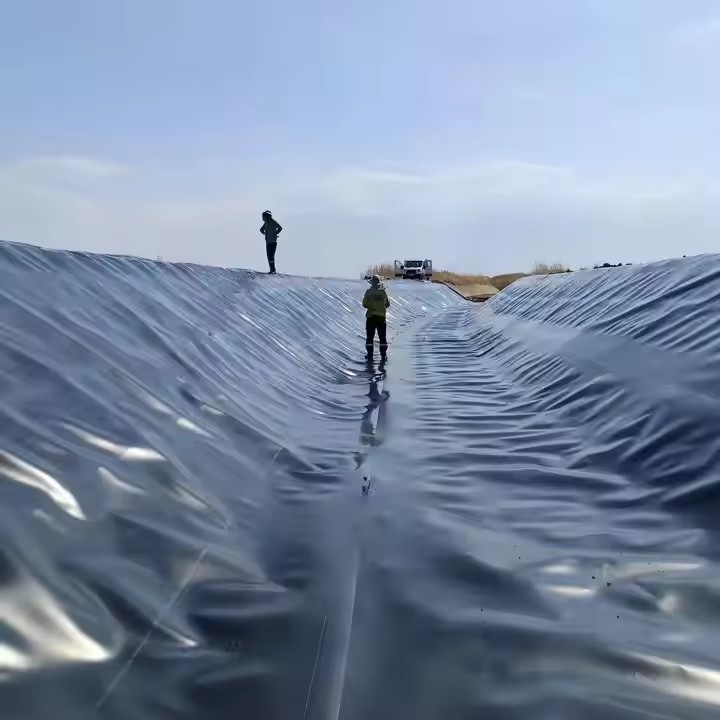Key Points of Site Preprocessing Before Geomembrane Laying
In the area of engineering construction, the exceptional of geomembrane installation is at once associated to the normal overall performance and carrier lifestyles of the project. However, many humans have a tendency to neglect an vital hyperlink that lays the basis for profitable geomembrane installation - web site preprocessing. Good web site preprocessing can no longer solely make sure the clean growth of geomembrane installation however additionally correctly decrease the danger of harm and failure in the later stage. This article will element the key factors of web page preprocessing earlier than geomembrane laying, hoping to furnish realistic training for applicable engineering personnel.
1. Thorough Site Cleaning
The first step of website preprocessing is thorough web site cleaning, which is the groundwork for making sure the pleasant of geomembrane installation. Before beginning any operation, it is indispensable to get rid of all boundaries that can also affect the laying of the geomembrane.
First of all, vegetation cleansing is essential. Weeds, shrubs, and bushes on the website online ought to be absolutely removed. For trees, it is no longer ample to simply reduce down the trunks; the roots need to also be dug out. This is due to the fact the final roots will proceed to develop over time, which may additionally pierce the geomembrane and purpose leaks. At the identical time, decaying roots will additionally shape voids in the soil, main to uneven contract of the ground, affecting the steadiness of geomembrane installation.
Secondly, it is quintessential to easy up development waste and debris. Stones, bricks, concrete blocks, and different difficult objects on the website ought to be removed. These challenging objects, if now not cleaned up, will no longer solely motive uneven stress on the geomembrane at some point of laying however may additionally additionally scratch or puncture the geomembrane below the motion of exterior force, severely endangering the impact of geomembrane installation. Even small gravels with a diameter exceeding 2cm must be cautiously cleaned up to keep away from hidden dangers.
In addition, pollution on the web site ought to be handled. If there are oil stains, chemical residues, or different detrimental resources on the site, they should be completely cleaned and treated. Oil stains will corrode the geomembrane material, lowering its impermeability; chemical residues might also react with the geomembrane, affecting its performance. For contaminated soil, expert checking out need to be carried out first, and corresponding therapy measures need to be taken in accordance to the check results, such as excavation and replacement, or chemical neutralization, to make sure that the website meets the environmental necessities for geomembrane installation.
During the cleansing process, it is indispensable to pay interest to the remedy of floor humus. Although humus is really helpful to plant growth, it is no longer appropriate for the base of geomembrane installation. Because humus has robust water absorption and is handy to decompose, it will purpose uneven contract of the floor after water absorption and decomposition, which will have an effect on the flatness of the geomembrane. Therefore, the humus layer with a thickness of greater than 5cm on the floor have to be removed, and the underlying soil must be exposed.
2. Fine Terrain Leveling
After finishing the website online cleaning, the subsequent key factor is high-quality terrain leveling, which is critical for the easy growth of geomembrane installation. The terrain after cleansing may additionally nonetheless have unevenness, slopes that do no longer meet the requirements, or nearby depressions and protrusions, which want to be adjusted via leveling.
First of all, the flatness of the website online ought to be ensured. The laying floor of the geomembrane ought to be as flat as possible, and the allowable deviation of the surface elevation ought to be managed inside a sure vary (usually ±5cm). For nearby depressions, it is imperative to fill them with fabulous materials. The filling substances ought to be regular with the surrounding soil residences as lots as possible, such as the usage of sand or clay with appropriate permeability. After filling, compaction cure need to be carried out to forestall settlement. For neighborhood protrusions, they have to be reduce off, and the reduce floor have to be smoothed to keep away from sharp edges.
Secondly, the slope of the website must be fairly adjusted. The slope layout have to be decided in accordance to the real wishes of the project, such as drainage necessities and the kind of geomembrane. In general, a slope of 2%-5% is conducive to drainage, which can forestall water accumulation on the floor of the geomembrane and limit the strain on the geomembrane. For steep slopes, it is crucial to take corresponding measures, such as placing anti-slip steps or growing the friction coefficient of the surface, to stop the geomembrane from sliding all through set up and use, making sure the steadiness of geomembrane installation.
In the procedure of terrain leveling, it is additionally quintessential to pay interest to the cure of difficult objects that are no longer definitely removed. Even small stones or steel fragments might also puncture the geomembrane, so after difficult leveling, it is integral to habits a distinct inspection of the site. It is satisfactory to use equipment such as rakes to comb the surface, and manually take away any last difficult objects. For areas with excessive requirements, a layer of quality sand can be unfold on the floor to in addition guard the geomembrane.
In addition, the boundary of the web site ought to be surely described at some stage in leveling. Mark the laying vary of the geomembrane, and make sure that the leveling work covers the whole range, and even extends a positive distance outward (usually 50-100cm) to facilitate the connection and fixing of the geomembrane at some point of installation. At the identical time, the connection between the web site and the surrounding buildings (such as walls, embankments) must be smoothed to keep away from sharp corners, which is conducive to the tight becoming of the geomembrane at the connection.
3. Strict Foundation Compaction
After terrain leveling, the basis soil desires to be compacted strictly, which is an vital hyperlink to make sure the balance of geomembrane installation. The compactness of the basis without delay influences its bearing capacity. If the basis is no longer compact enough, it will effortlessly lead to uneven settlement, which will motive the geomembrane to be stretched or squeezed, ensuing in damage.
First of all, it is fundamental to pick out the excellent compaction gear in accordance to the kind of soil. For cohesive soil, heavy rollers or vibratory rollers are commonly used; for sandy soil, vibratory rollers are extra fantastic due to the fact vibration can make the sand particles rearrange and fill the gaps. The compaction procedure ought to be carried out in layers, specifically for stuffed areas. Each layer of soil thickness need to be managed inside 20-30cm, and the subsequent layer of compaction can be carried out solely after the contemporary layer meets the compaction requirements.
Secondly, the compaction diploma need to be detected. The frequent detection techniques consist of the ring knife technique and the sand filling method. During the detection, the sampling factors must be evenly distributed, masking the complete site, and the quantity of sampling factors must meet the applicable specifications. The compaction diploma of the basis must normally attain greater than 93% (calculated by means of the most dry density), and for key parts (such as the facet of the geomembrane), it need to be elevated to greater than 95% to make sure ample bearing capacity.
In addition, interest must be paid to the moisture content material of the soil at some stage in compaction. The best moisture content material is the moisture content material when the soil can attain the most dry density underneath a sure compaction energy. If the moisture content material is too high, the soil will grow to be sticky and hard to compact, and it will effortlessly motive springing; if the moisture content material is too low, the soil particles can't be utterly bonded, and it is hard to attain the required compactness. Therefore, earlier than compaction, it is critical to check the moisture content material of the soil. If it does no longer meet the requirements, it ought to be adjusted with the aid of drying or watering.
For one-of-a-kind soil foundations, such as expansive soil or collapsible loess, specific remedy measures must be taken. Expansive soil will enlarge when moist and decrease when dry, which is effortless to purpose basis deformation. It can be handled via mixing lime or cement to enhance its engineering properties; collapsible loess will give way below the motion of water and load, and can be handled by means of dynamic compaction or grouting to do away with its collapsibility. Only by means of making sure the balance of the extraordinary soil basis can the easy growth of geomembrane installation be guaranteed.
4. Reasonable Design of Drainage System
A life like drainage device is an necessary assurance to stop water accumulation on the website online and make sure the long-term effectiveness of geomembrane installation. If water accumulates between the basis and the geomembrane, it will no longer solely make bigger the strain on the geomembrane however additionally may also seep into the foundation, inflicting basis deformation. Therefore, designing a scientific drainage gadget at some stage in website online preprocessing is crucial.
First of all, it is quintessential to formulate a drainage diagram in accordance to the terrain and hydrological stipulations of the site. The drainage gadget must consist of floor drainage and underground drainage. Surface drainage is generally to discharge the rainwater on the website in time, which can be realized by means of putting slope drainage and drainage ditches. The drainage ditches must be set alongside the contour line or the area of the site, with a sure slope (not much less than 2‰) to make certain easy water flow. The cross-section dimension of the drainage ditch need to be decided in accordance to the most rainfall in the region to forestall overflow.
Underground drainage is more often than not to discharge the groundwater or the water seeping from the surface. Drainage blind ditches and drainage pipes can be used. The drainage blind ditch is generally stuffed with gravel or beaten stone, which has properly water permeability. It is set in the location the place groundwater is considerable or convenient to accumulate water. The drainage pipe can be a perforated plastic pipe or a concrete pipe, which is buried in the blind ditch to rapidly gather and discharge water. The graph of the underground drainage machine need to shape a community to make certain that water can be amassed from all instructions and discharged to the specific water outlet.
Secondly, the connection between the drainage device and the geomembrane need to be treated properly. The drainage services must no longer harm the geomembrane, and at the equal time, it is crucial to stop water from seeping into the basis from the connection. For example, when the drainage pipe passes thru the geomembrane, a specific water-proof sleeve have to be used, and the hole between the sleeve and the geomembrane have to be sealed with water-proof substances to make certain tightness.
In addition, the drainage outlet ought to be set reasonably. The drainage outlet have to be related to the municipal drainage gadget or a herbal water physique with adequate capacity, and measures ought to be taken to forestall backflow. If the drained water includes pollutants, it need to be dealt with to meet the discharge requirements earlier than being discharged to keep away from environmental pollution.
5. Effective Treatment of Contaminants
The presence of contaminants in the website is a hidden risk to geomembrane installation, as they may additionally corrode the geomembrane fabric or have an effect on the steadiness of the foundation. Therefore, wonderful therapy of contaminants is an essential section of web site preprocessing.
First of all, a complete website online investigation and detection ought to be carried out. Before the begin of the project, expert establishments have to be invited to behavior a certain survey of the site, such as the type, distribution, and attention of contaminants. Common contaminants consist of heavy metals, petroleum hydrocarbons, pesticides, and organic solvents. The detection factors ought to cowl the whole site, specifically the areas that may additionally have been polluted (such as the authentic manufacturing facility place or waste stacking area).
According to the detection results, exclusive therapy strategies ought to be adopted. For areas with low pollutant awareness and small scope, in-situ remedy can be used. For example, for soil polluted by means of heavy metals, chemical leaching can be used, that is, spraying leaching dealers (such as citric acid, EDTA) to make them react with heavy metals to shape soluble substances, which are then eliminated by means of leaching; for natural polluted soil, bioremediation can be used, that is, including microorganisms that can degrade natural count number to speed up the decomposition of pollutants.
For areas with excessive pollutant awareness or tough in-situ treatment, ex-situ cure must be adopted. That is, the polluted soil is excavated and transported to a certain expert remedy website online for treatment. After treatment, the soil can be reused if it meets the applicable standards; otherwise, it have to be disposed of in accordance with the rules on hazardous waste. During the excavation process, it is fundamental to take measures to stop the unfold of pollutants, such as placing up isolation curtains and protecting the excavated soil.
In addition, for web sites with one-of-a-kind pollution (such as radioactive substances), it is quintessential to invite expert groups with applicable skills to elevate out cure in accordance with strict security techniques to make certain that the radiation stage after cure meets the protection standards, so as now not to have an effect on the geomembrane installation and the fitness of development personnel.
6. Adaptation to Climatic Conditions
Climatic prerequisites have a widespread have an impact on on website preprocessing and subsequent geomembrane installation, so it is quintessential to entirely think about and adapt to nearby climatic traits in the course of preprocessing.
First of all, temperature elements have to be considered. In high-temperature environments, the soil is handy to dry and crack, which influences the compaction effect. Therefore, throughout preprocessing, interest need to be paid to moisturizing the soil. Water can be sprayed accurately to preserve the soil moisture content material inside a realistic range. At the equal time, building ought to be prevented at midday when the temperature is the highest, and organized in the morning or evening. In low-temperature environments, mainly when the temperature is under zero, the soil will freeze, which makes compaction tough and the frozen soil will soften and settle after the temperature rises. Therefore, preprocessing ought to be carried out earlier than the soil freezes, or measures such as overlaying with insulation substances must be taken to stop the soil from freezing.
Secondly, precipitation elements ought to be considered. In wet areas or wet seasons, the website online is handy to accumulate water, which influences the growth and fine of preprocessing. Therefore, brief drainage services (such as drainage ditches and pumps) ought to be set up in strengthen to rapidly discharge rainwater. After rain, the web page must be inspected in time. If there is mud or water accumulation, it need to be cleaned up and the soil ought to be re compacted after drying to keep away from affecting the basis stability.
In addition, wind stipulations must additionally be considered. In windy areas, particularly in open sites, robust winds may additionally blow away the floor soil or motive dirt pollution. During preprocessing, windbreak measures can be taken, such as placing up windbreak nets round the site. For sandy soil sites, protecting with geotextiles can stop wind erosion and preserve the soil in a steady state, which is conducive to subsequent geomembrane installation.
In conclusion, web page preprocessing earlier than geomembrane laying is a systematic mission involving more than one links. Only with the aid of doing a accurate job in every key factor can we lay a stable basis for geomembrane installation, make certain the excellent and provider existence of the project, and maximize the function of the geomembrane in anti-seepage, isolation, and reinforcement. Engineering personnel ought to connect fantastic significance to website online preprocessing, strictly observe the applicable specs and key points, and raise out the work cautiously to make sure the clean development of the project.









